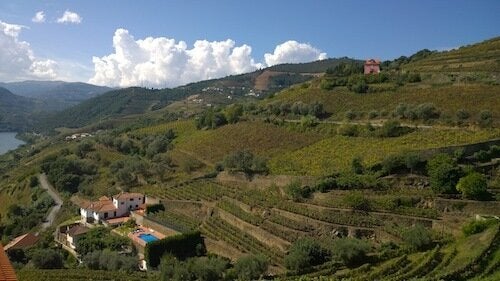
Vineyards in the Douro valley with a view of the river. Photo: Paul Allen
With a population of just over 200,000 and a compact historic centre, Porto is the ideal size for a mini-break and the charms of the Douro Valley are also within easy reach. On our recent visit, we combined a city cultural experience, seeing the best of Porto's art and architecture, with a scenic drive through wine country and an overnight stay at a spa hotel.
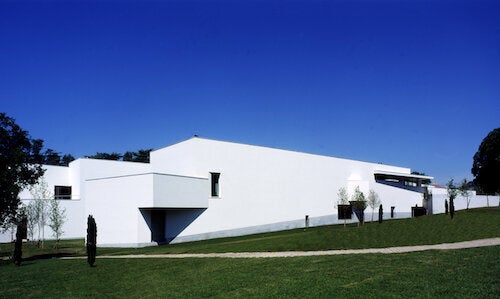
The Serralves Museum designed by Alvaro Siza Vieira
The impressive Museu de Arte Contemporanea de Serralves, celebrating its 15th anniversary this year, was one of the highlights of our autumn visit. Designed by Pritzker prize-winning architect Alvaro Siza Vieira (known in the UK for his design of the 2005 Serpentine Pavilion), the striking building, in white concrete and steel, is 4km west of the city, set in a beautiful 18-hectare park with formal gardens, ponds, fountains and woodlands.
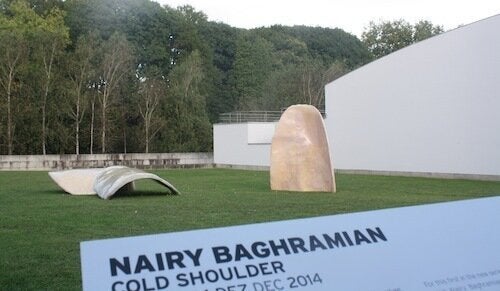
Sculpture by Nairy Baghramian at the Serralves. Photo: Paul Allen
On our approach to the Serralves museum, we strolled up an avenue of sweet gum trees imported decades ago by the original owner, the Count of Vizela, from the Canadian capital, Ottawa. Apparently the Count bought these to impress his neighbours as they turned red each autumn, a unique sight in Portugal. Also dotted around the grounds are sculptural works from the museum's permanent collection. A playful favourite is a giant red shovel by Claes Oldenburg and Coosje van Bruggen.

ABC (Line), Amalia Pica at the Serralves. Photo: Paul Allen
The museum shows several temporary exhibitions each year and also showcases work from the permanent collection of over 4,000 works from Portuguese and international artists such as Paula Rego, Helena Almeida, Claes Oldenburg, Luc Tuymans, Cildo Meireles, Amalia Pica and Tacita Dean.
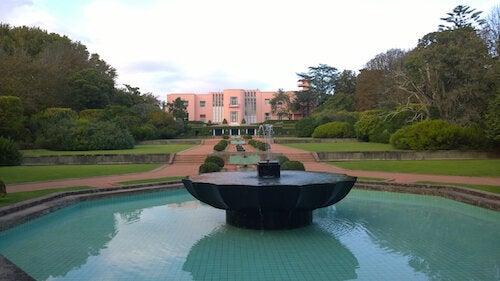
The 1930s villa at the Serralves. Photo: Paul Allen
A bonus is the lovely salmon-coloured 1930s art deco villa which houses the offices of the foundation and is used as an additional space to show artwork. When we were there, I loved Narrow White Flow, a floaty white fabric installation filling one of the rooms by German artist Hans Haacke.
We didn't bring a picnic to enjoy in the park so we were pleased to find three lovely places to eat- a restaurant and terrace bar in the museum and a tea house on the grounds in what used to be the tennis courts for the villa. The park and museum are both free to visit on Sunday mornings but the 8.50 euro admission charge (or 4 euros for park alone) seems more than reasonable.

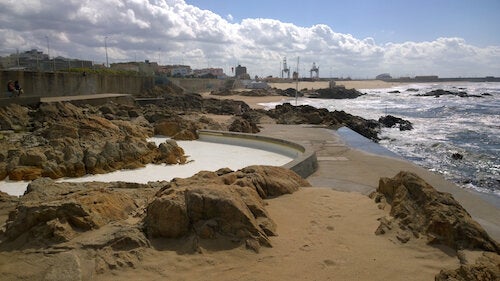
Siza's Piscinas das Mares. Photos: Paul Allen
Alvaro Siza is a major presence in Porto and some of his other projects are definite must-sees. The Piscinas das Mares, one of Siza's earliest works, is a tidal pool complex completed in 1966. Set into the natural rock on the sea front, it fits perfectly into the shore. The seawater-fed adult and children's pools, changing room building and cafe, all offer glorious, unobstructed sea views.

Michelin starred Casa de Cha Boa Nova
Just up the road from the tidal pools, is Casa de Cha Boa Nova a former 'tea house', also designed by Siza, which is now a very swish Michelin-starred restaurant under the helm of Chef Rui Paula. Tasting menus featuring local fish and seafood can be enjoyed with gorgeous views of the sea through floor to ceiling retractable glass windows which on warm days are open to the sea breezes. A reservation is essential as the restaurant is already so popular that it's booked months in advance.
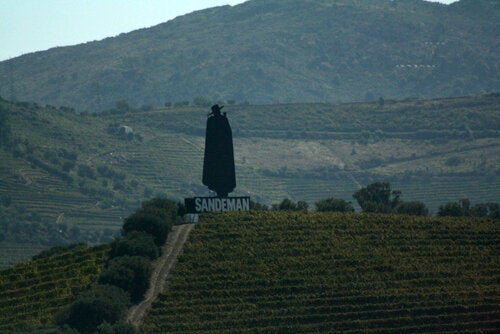
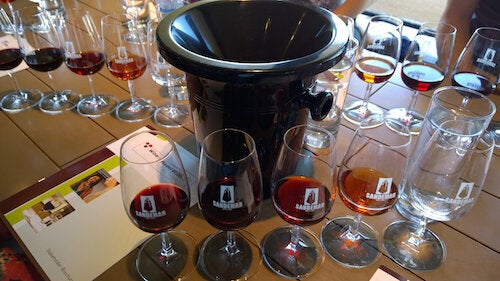
Port wine tasting at Sandeman. Photo: Paul Allen
Beautiful scenery along steep winding roads led us to Quinta do Seixo, the Sandeman vineyard with astonishing views of the river Douro. Sipping from glasses designed by Siza, we enjoyed a port wine tasting hosted by Mr Sandeman himself, one of the descendants of George Sandeman, founder of the 18th century House of Sandeman. A tour of the cellars and wine presses was followed by a lunch (and more wine) overlooking the rolling vineyards and river. The vineyard and shop are open to the public for tours starting from a reasonable 6 euros (including tastings).

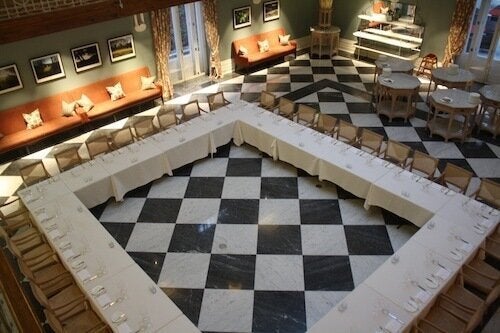
The Vidago Palace hotel. Photos: Paul Allen
After our Port wine-fuelled afternoon, the restorative powers of the natural mineral springs, at the Vidago Palace hotel,were indeed welcome. Although frequented by royalty and aristocracy for centuries, the hotel actually opened on 6 October 1910, the first day of the Portuguese republic, the day after the fall of the monarchy. In 2010, needing a complete overhaul, the hotel was redesigned and refurbished by Bastir under the helm of Jose Pedro Lopes Vieira and Diogo Rosa La. We already had a taste of superb Bastir design when we stayed at the fabulous Bairro Alto hotel in Lisbon this summer. They've done an equally brilliant job with the Vidago Palace especially in maintaining the style of the Belle Epoque with sumptuous furnishings, silk wallpapers and wood panelling. And we were surprised to find another Siza construction -a new spa, the contemporary stylings of which perfectly complement the historic hotel. After relaxing in a Siza designed hot tub in the spa, we wandered the grounds and sampled water from one of the six springs housed in a lovely art nouveau pavilion. At roughly an hour from Porto, it's no surprise that the hotel, now part of the Leading Hotels of the World group, is a popular weekend getaway.
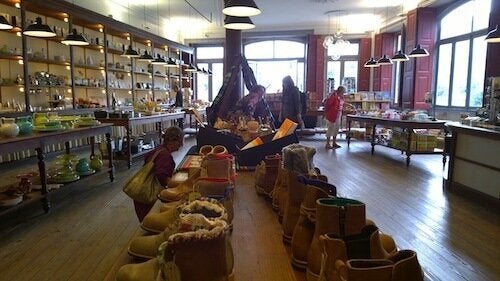
A Vida Portuguesa. Photo: Paul Allen
We finished our weekend break back in Porto with a visit to A Vida Portuguesa, a really special shop that is the brainchild of ex-journalist Catarina Portas, a passionate advocate of Portuguese brands. The shop is filled with products created and made in Portugal, often with original vintage packaging handed down through generations. We spent a happy hour browsing the stacks of brightly wrapped soaps and colourful notebooks, along with traditionally packaged olive oil, sardines and coffee.
Following our visit to a shop with traditional Portuguese products, it was fitting that we had lunch in a traditional Portuguese restaurant nearby, the Solar Moinho de Vento. We enjoyed, and would definitely recommend, the rice-based stews of octopus, chicken and beef, along with cod fritters. A pleasantly tart and thick lemon mousse was the ideal way to finish a fantastic meal.
Porto is without doubt an excellent city for a mini-break and we plan to return for a second visit very soon.